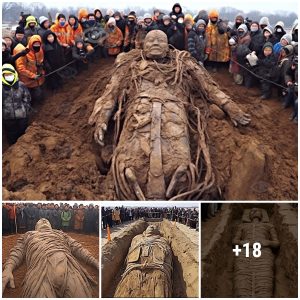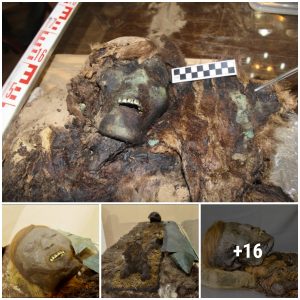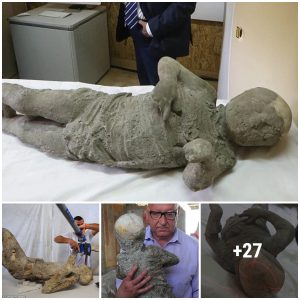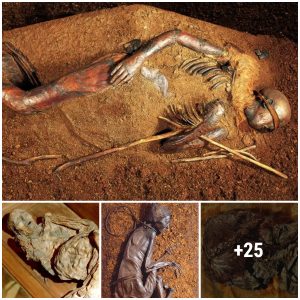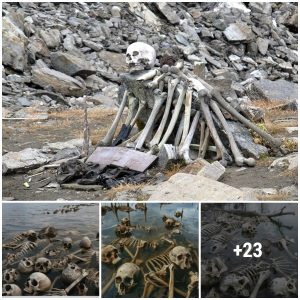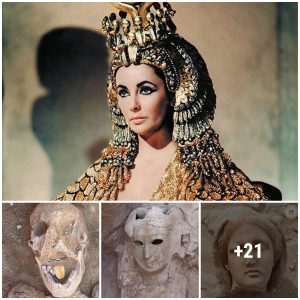A farmer digging on his land in Russia discovered something unexpected: a 2,000-year-old burial mound containing the remains and artifacts of a nomadic royal — including a strange “laughing” man skull.
Stunning gold and silver jewellery, weaponry, valuables and artistic household items were found next to the chieftain’s skeleton in a grave close to the Caspian Sea in southern Russia.
Local farmer Rustam Mudayev’s spade made an unusual noise and it emerged he had struck an ancient bronze pot near his village of Nikolskoye in Astrakhan region.
He took it to the Astrakhan History museum for analysis and an experts opinion on the find.

‘As soon as the snow melted we organised an expedition to the village,’ said museum’s scientific researcher Georgy Stukalov.
‘After inspecting the burial site we understood that it to be a royal mound, one of the sites where ancient nomads buried their nobility.’
The burial is believed to belong to a leader of a Sarmatian nomadic tribe that dominated this part of Russia until the 5th century AD, and other VIPs of the ancient world, including a ‘laughing’ young man with an artificially deformed egg-shaped skull and excellent teeth that have survived two millennia.

‘We have been digging now for 12 days,’ said Mr Stukalov.
‘We have found multiple gold jewellery decorated with turquoise and inserts of lapis lazuli and glass.’
The most ‘significant’ finds is seen as a male skeleton buried inside a wooden coffin.
This chieftain’s head was raised as if it rested on a pillow and he wore a cape decorated with gold plagues.
Archaeologists found his collection of knives, items of gold, a small mirror and different pots, evidently signalling his elite status.
They collected a gold and turquoise belt buckle and the chief’s dagger along with a tiny gold horse’s head which was buried between his legs, and other intricate jewellery.
Nearby was a woman with a bronze mirror who had been buried with a sacrificial offering of a whole lamb, along with various stone items, the meaning of which is unclear.
Another grave was of an elderly man – his skeleton broke by an excavator – but buried with him was the head of his horse, its skull still dressed in an intricate harness richly decorated with silver and bronze.

Also in the burial mound was the skeleton of a young man with an artificially deformed egg-shaped skull.The shape is likely to have been ‘moulded’ either by multiple bandaging or ‘ringing’ of the head in infancy.
Such bandages and or rings were worn for the first years of a child’s life to contort the skull into the desired shape.Shaping and elongating the skull in this way was popular on various continents among ancient groupings like the Sarmatians, Alans, Huns and others.Such deformed heads were seen a sign of a person’s special status and noble roots, and their privileged place in their societies, it is believed.
The burials date to around 2,000 years ago, a period when the Sarmatian nomadic tribes held sway in what is now southern Russia.‘These finds will help us understand what was happening here at the dawn of civilisation,’ said Astrakhan region governor Sergey Morozov. Excavation is continuing at the site.
